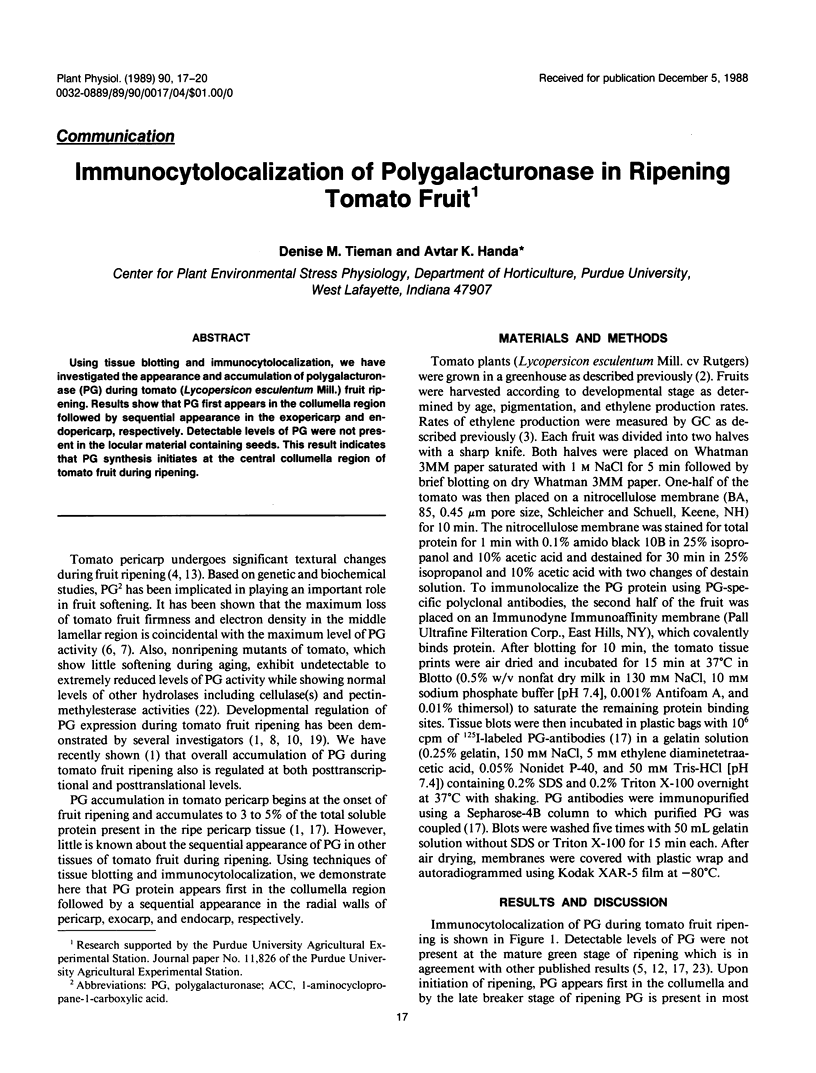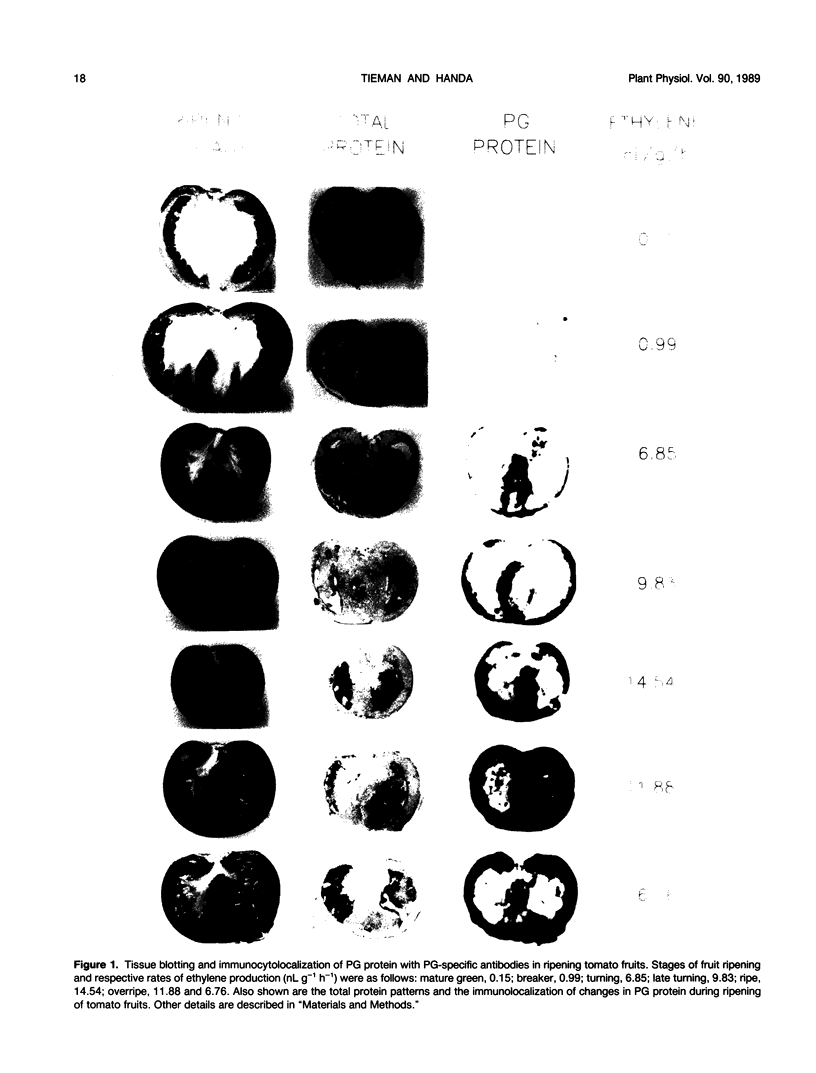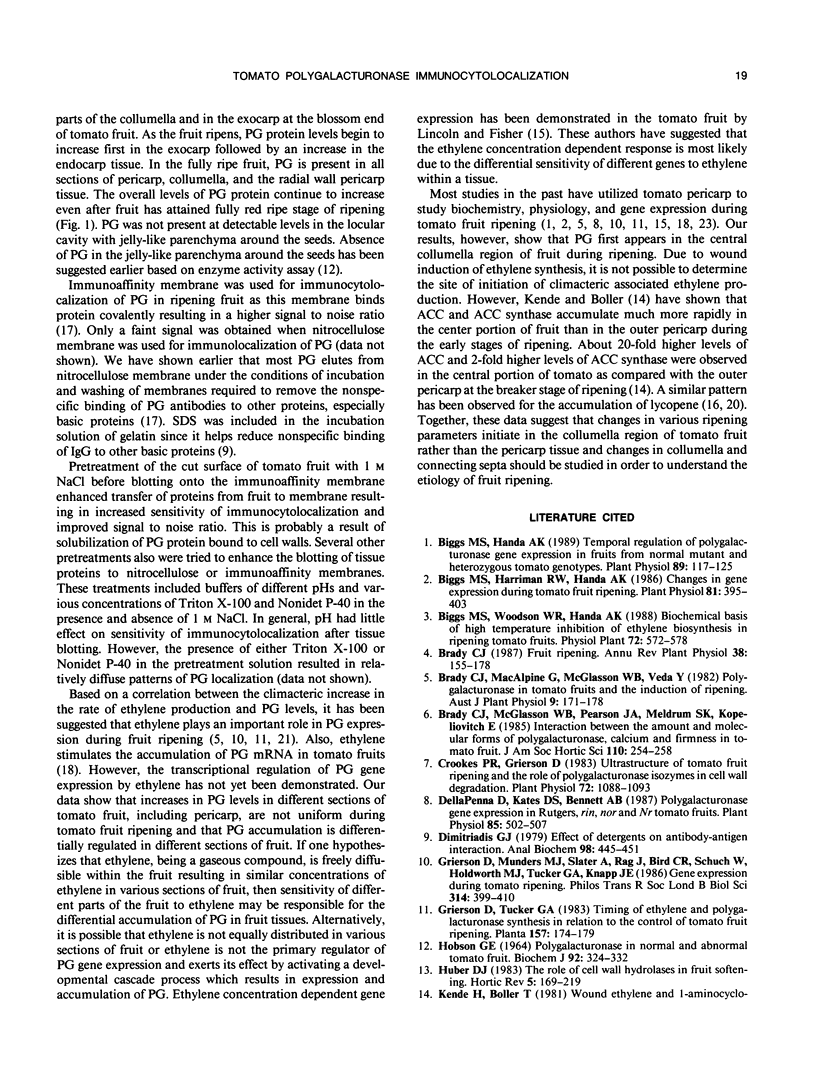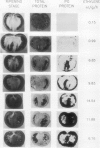Abstract
Using tissue blotting and immunocytolocalization, we have investigated the appearance and accumulation of polygalacturonase (PG) during tomato (Lycopersicon esculentum Mill.) fruit ripening. Results show that PG first appears in the collumella region followed by sequential appearance in the exopericarp and endopericarp, respectively. Detectable levels of PG were not present in the locular material containing seeds. This result indicates that PG synthesis initiates at the central collumella region of tomato fruit during ripening.
Full text
PDF



Images in this article
Selected References
These references are in PubMed. This may not be the complete list of references from this article.
- Biggs M. S., Handa A. K. Temporal regulation of polygalacturonase gene expression in fruits of normal, mutant, and heterozygous tomato genotypes. Plant Physiol. 1989 Jan;89(1):117–125. doi: 10.1104/pp.89.1.117. [DOI] [PMC free article] [PubMed] [Google Scholar]
- Biggs M. S., Harriman R. W., Handa A. K. Changes in Gene Expression during Tomato Fruit Ripening. Plant Physiol. 1986 Jun;81(2):395–403. doi: 10.1104/pp.81.2.395. [DOI] [PMC free article] [PubMed] [Google Scholar]
- Crookes P. R., Grierson D. Ultrastructure of tomato fruit ripening and the role of polygalacturonase isoenzymes in cell wall degradation. Plant Physiol. 1983 Aug;72(4):1088–1093. doi: 10.1104/pp.72.4.1088. [DOI] [PMC free article] [PubMed] [Google Scholar]
- Dellapenna D., Kates D. S., Bennett A. B. Polygalacturonase Gene Expression in Rutgers, rin, nor, and Nr Tomato Fruits. Plant Physiol. 1987 Oct;85(2):502–507. doi: 10.1104/pp.85.2.502. [DOI] [PMC free article] [PubMed] [Google Scholar]
- Dimitriadis G. J. Effect of detergents on antibody-antigen interaction. Anal Biochem. 1979 Oct 1;98(2):445–451. doi: 10.1016/0003-2697(79)90165-9. [DOI] [PubMed] [Google Scholar]
- Hobson G. E. Polygalacturonase in normal and abnormal tomato fruit. Biochem J. 1964 Aug;92(2):324–332. doi: 10.1042/bj0920324. [DOI] [PMC free article] [PubMed] [Google Scholar]
- Lincoln J. E., Fischer R. L. Diverse mechanisms for the regulation of ethylene-inducible gene expression. Mol Gen Genet. 1988 Apr;212(1):71–75. doi: 10.1007/BF00322446. [DOI] [PubMed] [Google Scholar]
- Marlow S. J., Handa A. K. Immuno slot-blot assay using a membrane which covalently binds protein. J Immunol Methods. 1987 Jul 16;101(1):133–139. doi: 10.1016/0022-1759(87)90226-2. [DOI] [PubMed] [Google Scholar]
- Tucker G. A., Robertson N. G., Grierson D. Changes in polygalacturonase isoenzymes during the 'ripening' of normal and mutant tomato fruit. Eur J Biochem. 1980 Nov;112(1):119–124. doi: 10.1111/j.1432-1033.1980.tb04993.x. [DOI] [PubMed] [Google Scholar]



